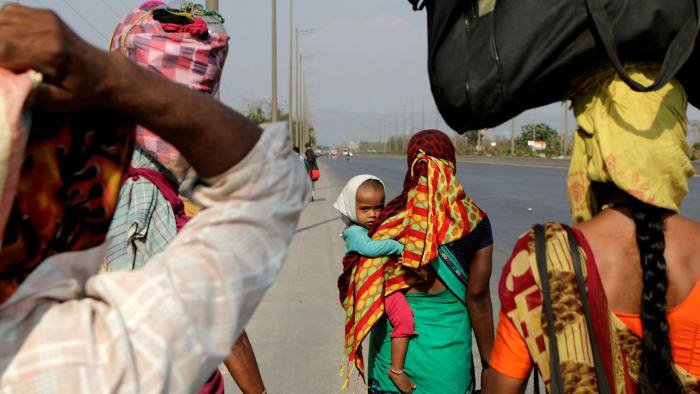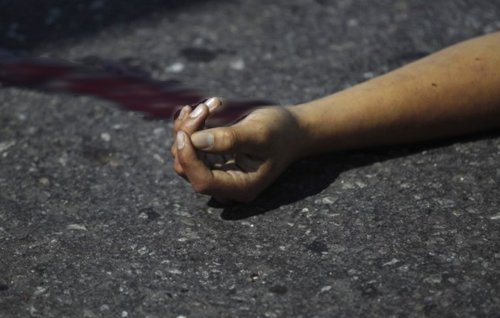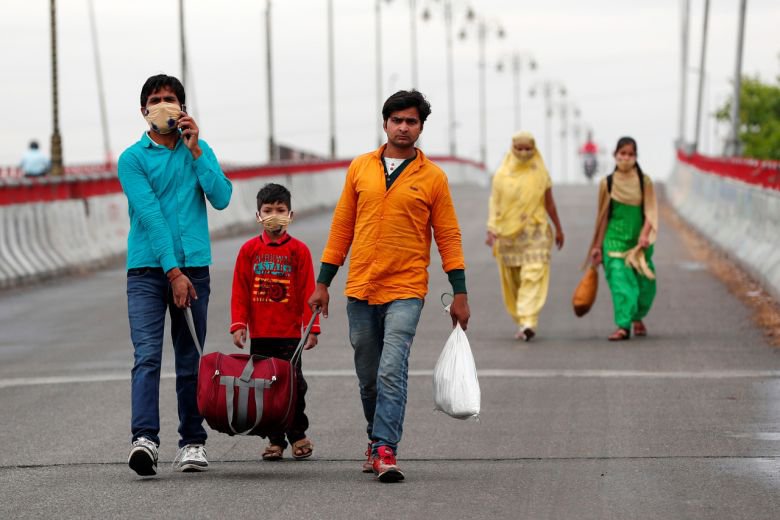At 8 PM on March 24, Prime Minister Narendra Modi addressed the nation and with just four hours to spare, he announced a complete 21-day nationwide lockdown, one of the most stringent steps taken by any country to fight Covid-19.
While this step was necessary in order to prevent the spread of coronavirus and to flatten the curve, this move rendered a huge population of our country into a fright.

The daily wage workers who earn their livelihood on an every-day basis were scared for their survival. Most of the daily wage workers who work in the metropolitan cities have come from distant states and in the midst of the lockdown, with no work left in the big cities, longed to go back home.
Who knew that in 2020 when India had dreamt to be a superpower, its workers would have no place to live or eat? Here are just a few examples of how the daily wage, migrant workers have had the hardest hit because of this lockdown.
4 labourers lost their lives as a truck crushed them in the middle of the night.
Seven labourers were asked to return to their shanties in Vasai by the Gujarat police, as they were going to their villages in Rajasthan on the 27th night. Out of the seven labourers, four lost their lives as a truck ploughed them to death. The remaining three were seriously injured.

A pregnant woman along with husband forced to walk 100 km.
An eight-month pregnant woman and her husband were forced to walk over a 100 km back home when the husband’s employer allegedly asked them to vacate the room where they were staying. The couple was helped by locals in Meerut.

Ranveer Singh said ‘lene aa sakte ho toh aa jao‘ before he died.
Ranveer Singh started to walk from Delhi to his hometown in Madhya Pradesh after being crushed by the lockdown. With over a 100 km yet to cover, he collapsed in Agra due to exhaustion and died of a heart attack.
In the last phone call that he made to his family back home, his last words were, “Lene aa sakte ho toh aa jao (come get me if you can).”

Thousands of workers surrounded the Anand Vihar Bus Stop.
On 28th March, thousands of migrant workers assembled at the Anand Vihar Interstate-state Bus terminus in a hope to catch a bus to their home town. Ajay, a migrant worker told the Economic Times, “We have no savings and thus, it is difficult for us to survive in Delhi without money. We have also no money to pay our rent. So, I have decided to return to my village.”
Pic of 6 hungry kids eating grass in Modi’s constituency Varanasi went viral.
On 25th March, a group of six children of the Musahar community living in the Musahar Basti in Koiripur village in Varanasi were photographed eating grass. The six kids have been identified as Rani, Pooja, Vishal, Neerhu, Soni and Golu, according to The Wire.
As the images started going viral on social media, the administration intervened and offered them ration for the week.
Migrant workers sprayed with disinfectant.
On 30th April, a video clip from Bareilly in Uttar Pradesh was circulated widely online. In the video, the health officials of the state were seen using hose pipes to douse the migrant workers who had entered the state in disinfectant. After widespread anger and criticism from the people, an inquiry was ordered.
Nowhere to go, West Bengal labourers forced to quarantine on a treetop.
Residents of Vangidi village in West Bengal were forced to quarantine themselves on a treetop after they returned to Chennai. Since they do not have separate rooms in their own homes, the residents had no other option left.
West Bengal: Villagers of Vangidi village in Balarampur area of Purulia, who have recently returned from Chennai, have quarantined themselves for 14 days on a tree since they do not have a separate room in their houses for isolation. #COVID19 pic.twitter.com/oHUq0j8RZ8
— ANI (@ANI) March 28, 2020
There are just a few examples of how the 21 days nationwide lockdown has failed our workers. And hey, this is not a naive, unaccounted mistake. For the last 73 years of Independence, we have never had policies to safeguard the interest of the poorest of the poor.

















